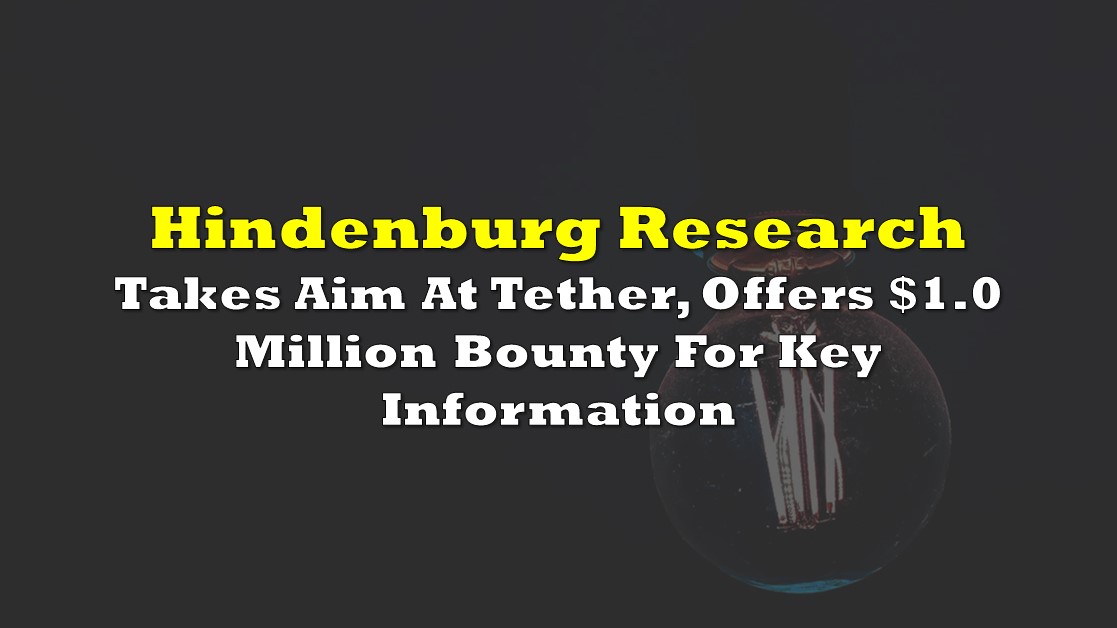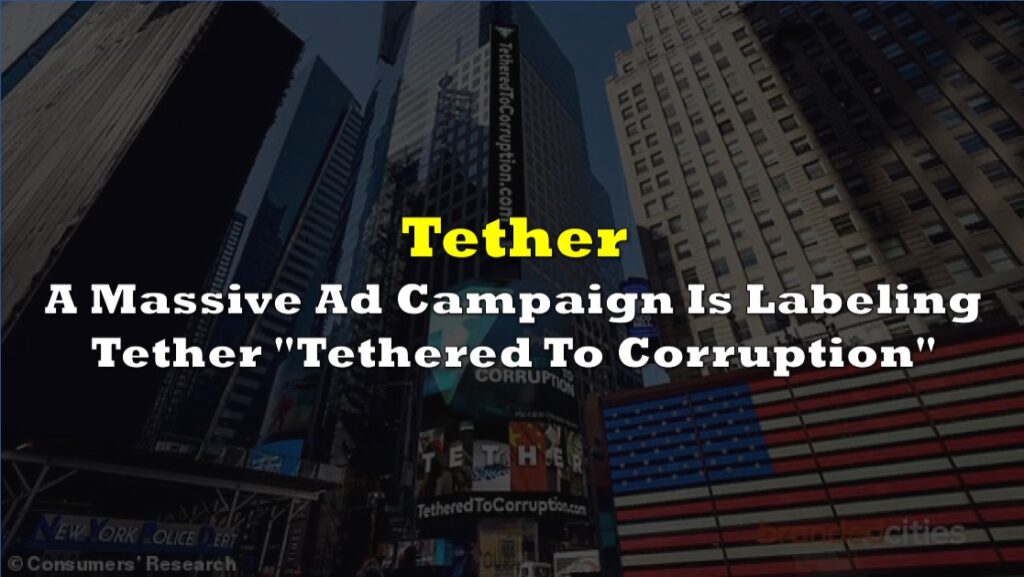Either go big, or go home. Notorious short sellers Hindenburg Research this evening took aim at perhaps one of the largest potentials for a fraud in the current market: tether. The firm this evening made the announcement that it is targeting the stablecoin due to its “doubts about the legitimacy” of the coin.
Hindenburg however broke from tradition with its skepticism, and instead of issuing a well-rounded short report, they introduced what they refer to as the “Hindenburg Tether Bounty Program,” which promises to reward someone with up to $1.0 million for details on the backing of the stablecoin.
We have doubts about the legitimacy of Tether, so today we announce the Hindenburg Tether Bounty Program, a reward of up to $1,000,000 for details on Tether’s backing.
— Hindenburg Research (@HindenburgRes) October 19, 2021
(1/x)https://t.co/DP5dWDcYmJ
Commenting on the program via Twitter, Hindenburg stated the following:
“Since the claims that garnered it “stablecoin” status were made, Tether subsequently revealed that its coin was backed only by a small percentage of traditional currency, and that much of its backing consists of holdings in commercial paper issued by unnamed counterparties.
Despite multiple regulatory sanctions over its alleged lack of truthful disclosure about its reserves, and despite Tether now having a $70 billion market cap, Tether still refuses to provide transparency to the public on its holdings.”
The firm then went on to say that it believes Tether “could be a growing threat to investors.”
In making the announcement, the company, whom has taken down market heavyweights such as Nikola Corp (NASDAQ: NKLA), indicated that unlike in its previous reports, they hold no positions in Tether or any cryptocurrency, either long or short. That is to say, they will not profit from the downfall of the coin directly, if that were to happen.
The targeting by Hindenburg, while potentially impactful, is hardly the first challenge that the stablecoin has faced as of late. Notably, its been the subject of multiple investigations by the New York Attorney General, the SEC, and other regulatory agencies. Most recently, it was fined $41 million by the CFTC over its misleading claims that the stablecoin was fully backed by US dollars on a one-to-one basis – a subject area that Hindenburg drills into.
“Recent reporting has indicated that Tether’s claims would make it one of the largest holders of commercial paper in the world. But major trading desks stated to the press that they had never worked with them or seen them in the market.”
With respect to the bounty, Hindenburg outlines a number of key areas it would like to collect data on from whomever receives the payout from the program. Such details include:
- Tether’s current backing, including commercial paper holdings, counterparties, and amounts.
- How Tether’s actual backing may have differed from its public disclosures.
- Historical snapshots of Tether’s backing, to illustrate any potential deviations over time from Tether’s public claims.
- Tether’s process and procedures for printing reserves, including as relates to deposits.
- Tether’s process and procedures for withdrawals, and any actual or potential issues it has with satisfying its withdrawals.
- Any other information on Tether’s service providers, peg dynamics, and client counterparties that more fully explain Tether’s peg system or reserves.
Of course, the potential problem with the program as a whole is the simple fact that if one has access to such information, they are likely close enough to the scheme that their information is worth much more than the bounty is willing to reward. For that however, time will tell based on the future reports issued by Hindenburg.
Information for this briefing was found via Hindenburg Research. The author has no securities or affiliations related to this organization. Not a recommendation to buy or sell. Always do additional research and consult a professional before purchasing a security. The author holds no licenses.









